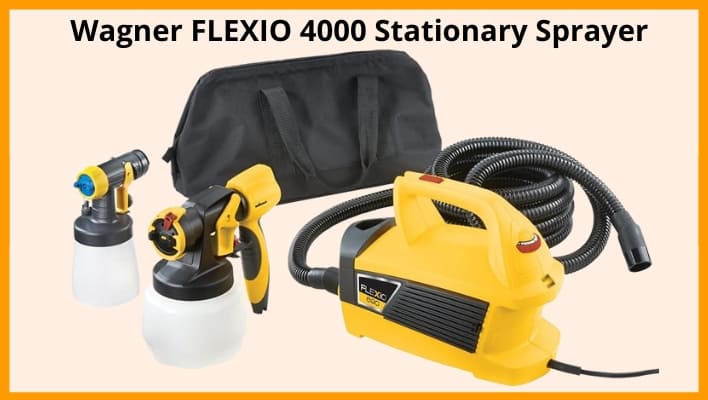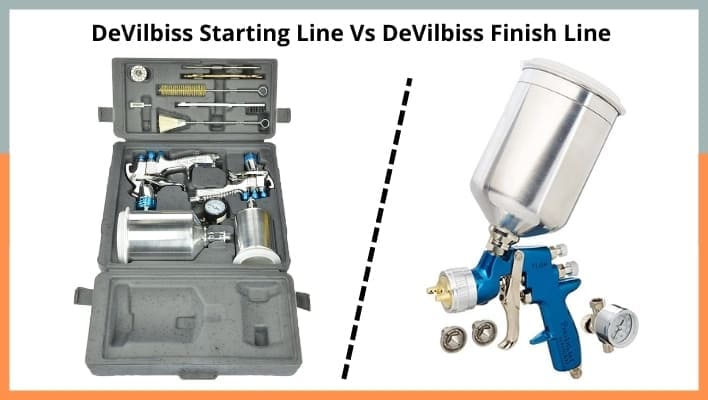Ever wished you could paint a room in a single day, achieving a professional finish without the tedious brush-and-roller routine? Well, guess what? I’ve found the secret, and it comes in the form of the Wagner Spraytech 0580001 Control Pro 170 Paint Sprayer – your ultimate shortcut to hassle-free, high-quality painting. After using it for a couple of projects, I can confidently say it’s a great tool that deserves a spot in your toolkit.
The Control Pro 170 is not just an upgrade model of the Control Pro 150; it’s a lifeline for painters. I got a professional finish three times faster, with a spray gun that’s a powerhouse in my hands. With the Control Pro 170, you get speed, precision, and a powerful spray gun that simplifies DIY like never before.

Table of Contents
- My experience With Wagner Control Pro 170 HEA airless paint sprayer
- Wagner Control Pro 170 Paint Sprayer Features
- What I Like:
- What I Dislike:
- Preparation & Performance
- Setting Up the Wagner Control Pro 170 Paint Sprayer:
- External Pump for Convenience:
- Adjustable Pressure for Different Jobs:
- Material Compatibility
- Suction Hose for a Mess-Free Experience:
- Sureflo Pusher Valve for Easy Start:
- Wagner Control Pro 130 Vs 150 Vs 170 Vs 190 (Previous & Updated Model)
- How To Use Wagner Control Pro 170 Paint Sprayer?
- Wagner Control Pro 170 vs. Graco X5: Quick Comparison
- What Real Users Say About The Wagner Control Pro 170 Airless Sprayer
- Jennifer Marie
My experience With Wagner Control Pro 170 HEA airless paint sprayer
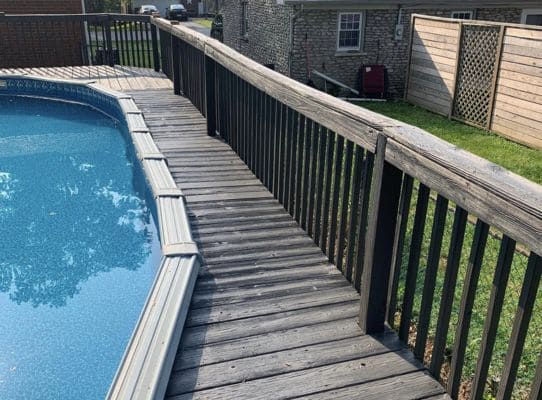
In my recent painting project, I put the Wagner Control Pro 170 airless paint sprayer to the test by tackling a massive pool deck, a small walkway and the exterior of a house. The machine proved to be a reliable sprayer, making the job 3 times faster than traditional methods. The learning curve was surprisingly manageable, and I successfully primed and painted the entire exterior of my home, achieving a beautiful finish.
The Control Pro 170 isn’t my average paint sprayer. It uses this cool HEA technology that cuts down on overspray up to 55 percent, making the application way more controlled and giving a smoother finish.
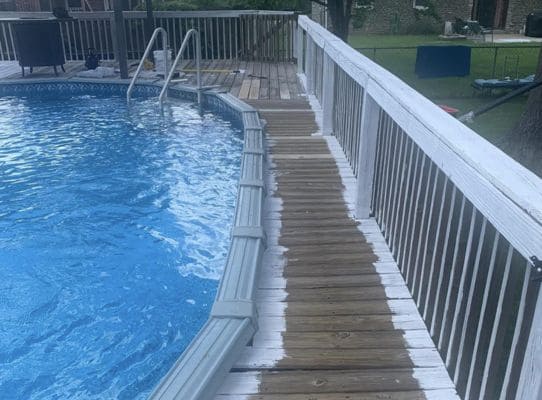
The durable 0.60 horsepower HEA pump allows me to spray unthinned paint and stain materials, offering versatility for my projects.
Equipped with a 30 ft. hose, an all-metal gun, and the ability to spray up to 300 gallons per year, this sprayer demonstrated its capability on large-scale projects. The learning insights were further enhanced with the inclusion of different spray tips, such as the 515 HEA tip for latex paints, showcasing the sprayer’s adaptability.
It’s got some cool features to make your life easier, like a pressure control knob for adjusting paint flow with ease. It is stationary sprayer and has a spot to keep spare tips, and pulls paint straight from a 5-gallon bucket—super convenient for those big jobs.
The Control Pro 170’s long-lasting pump, backed by an industry-leading warranty, along with the option to use different tips for specific coatings, made my projects a resounding success in terms of efficiency, versatility, and the quality of the final result.
Wagner Control Pro 170 Paint Sprayer Features
- Max pressure of 1500 PSI
- Airless technology
- 30 ft. hose
- HEA pump
- HEA 515 spraying tip
- 5 gallons
What I Like:
- Budget-friendly yet delivers uniform spray coverage comparable to pricier options.
- Great airless sprayer for various paint types, perfect for DIY projects.
- HEA technology reduces overspray by 55%, minimizing waste.
- Comes with the industry’s best and longest two-year warranty.
- Lightweight with a detachable gun.
- 30-foot hose for flexible maneuvering.
- I can spray interior and exterior paints and stains right from the can.
- Three times faster than a roller.
- Ideal for large projects.
- Pump lasts three times longer than competitors.
- Adjustable power settings for customization.
- You can also get Wagner Control Pro 170 in the cart design.
What I Dislike:
- When you are assembling for the first time, it can be difficult.
- It will take around 20-30 minutes to clean the sprayer completely.
Preparation & Performance
Setting Up the Wagner Control Pro 170 Paint Sprayer:
Getting the Wagner Control Pro 170 airless paint sprayer ready is a breeze. Most parts just snap into place during assembly. However, the pump-priming part can be a bit tricky. Connecting the paint hoses is straightforward, but getting the pump to prime might need some extra steps from the manual. If the first method doesn’t work, the manual suggests turning the unit upside down and pouring a bit of water into the paint-intake valve. The manual is pretty clear with illustrations, but it would be great if Wagner could make the priming process smoother.
External Pump for Convenience:
What’s cool about the Control Pro 170 is that it has an external pump, making it less of a workout for you. It comes in two versions – one you can place on the floor with a sturdy plastic stand, and the other on a cart for easy moving around. This is a relief, especially if you’re not into heavy lifting or need to move the sprayer between different places.
Adjustable Pressure for Different Jobs:
Right on the front of the Wagner 170, there’s a pressure control dial. It’s easy to use, even if your hands are covered in paint. You can adjust it in five steps, so you can tailor the power to what you’re painting. Thinner stuff like sealers need less pressure, while thicker latex-based paints might need more.
Material Compatibility
The Control Pro 170 from Wagner stands out for its versatility in handling various materials during DIY projects. It excels in applications such as wood stain, semi-transparent stain, solid stain, and paint & primer, consistently delivering optimal performance. For precision in wood and semi-transparent staining, users are advised to use a smaller tip.
Additionally, the paint sprayer seamlessly transitions between interior and exterior projects, accommodating 2-in-1 paints, primers, as well as latex and oil enamel. Its adaptability across different materials makes the Control Pro 170 a dependable choice, ensuring a smooth and efficient painting experience for a range of home improvement tasks.
| Tip | Uses | Pressure Settings |
| 212 | Interior stains, water sealers | Low-medium (1-3) |
| 311 | Interior stains, interior clears, water sealers | Low-medium (1-3) |
| 313 | Exterior solid stains, acrylic paint, sealers | Medium-high (3-5) |
| 413 | Exterior solid stains, acrylic paint, sealers | Medium-high (3-5) |
| 517 | Latex paint, latex primer, oil primers | High (5) |
| 619 | Oil primer, exterior latex paint | High (5) |
| 515 | Latex paints | Medium-high (3-5) |
Suction Hose for a Mess-Free Experience:
The Control 170 has a suction hose that doesn’t kink, so you don’t have to fill a container before using it. Just stick the suction line into your paint can, and the pump draws the liquid in. Plus, there’s a filter on the hose to keep dirt out, making sure your paint job stays debris-free.
Sureflo Pusher Valve for Easy Start:
Now, priming can be a headache with some sprayers, but not with the Wagner Control Pro 170. It has this nifty Sureflo feature. Just press the prime button three to four times, and your sprayer is good to go. This makes it super easy, especially if you’re new to airless sprayers. If you’re on the lookout for more power and extra features, you might want to peek at the Control Pro 190 sprayer.
Wagner Control Pro 130 Vs 150 Vs 170 Vs 190 (Previous & Updated Model)
| Model | Max Tip Size | Flow Rate (gal/min) | Hose Length (feet) | Horsepower | Adjustable Pressure Setting |
| Control Pro 130 | 515 | 0.24 | 25 | 0.37 | No |
| Control Pro 150 | 515 | 0.29 | 25 | 0.55 | Yes |
| Control Pro 170 | 517 | 0.33 | 30 | 0.60 | Yes |
| Control Pro 170 (with cart) | 517 | 0.33 | 50 | 0.60 | Yes |
| Control Pro 190 | 519 | 0.40 | 50 | 0.7 | Yes |
How To Use Wagner Control Pro 170 Paint Sprayer?
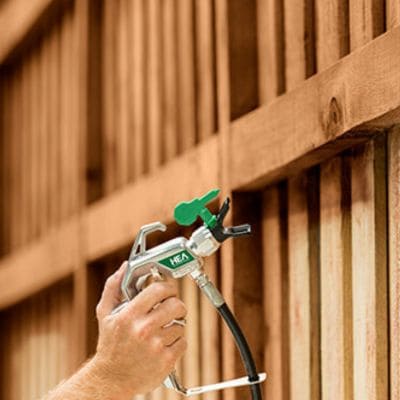
- Read the Wagner Control Pro 170 manual for key tips on assembly, usage, and maintenance. It’s your guide to mastering your paint sprayer easily.
- Follow the assembly instructions meticulously to ensure all components, including the spray tip and hose, are correctly connected for a secure fit.
- Before painting, meticulously clean and smooth the intended surface, removing dirt, dust, and loose particles. A well-prepared surface contributes to a smoother finish.
- Select the spray tip suitable for your project, considering various materials and applications. Consult the paint sprayer’s manual for guidance on tip selection.
- Ensure the paint or stain used is compatible with the Wagner sprayer. Adhere to the manufacturer’s recommendations for thinning, if necessary, and strain the paint to prevent clogs.
- Fine-tune pressure settings based on the material. In my projects, a pressure setting between 3 and 5 proved effective for achieving professional-grade results. Lower pressure suits smooth surfaces, minimizing overspray, while higher pressure is ideal for textured or outdoor projects.
- Before initiating the main project, conduct a test spray on a scrap surface to confirm the sprayer’s adjustment and your comfort with the spray pattern.
- Consistent distance helps achieve an even coat without overspraying. I personally found an 18-inch distance effective for my projects.
- Maintain a consistent and steady pace, overlapping each pass slightly to ensure an even application and prevent streaks.
- Practice controlling the spray gun’s movement to achieve uniform application. Consistency in speed and distance is vital for professional-looking results.
- After each use, clean the paint sprayer meticulously, following the manufacturer’s instructions. This prevents clogs and enhances the equipment’s longevity.
- Safeguard nearby surfaces using painter’s tape and drop cloths to prevent overspray. This precaution ensures clean and precise results while maintaining a tidy work environment.
Wagner Control Pro 170 vs. Graco X5: Quick Comparison
Both the Wagner Control Pro 170 and Graco X5 share common features. They’re versatile, handling a range of paints for diverse projects. Both are using airless technology, ensuring consistent finishes without the need for an air compressor.
However, they differ in maximum pressure, with the Graco X5 at 3000 PSI and the Wagner 170 at 1500 PSI. The Wagner has a higher flow rate (0.33 GPM) compared to the Graco (0.27 GPM), resulting in faster coverage. The Wagner Control pro 170 is lighter, making it more maneuverable, and has a higher recommended annual usage (300 gallons).
On the other hand, the Graco X5’s higher pressure is beneficial for thicker coatings, but it’s heavier and recommended for smaller projects (125 gallons annually).
In summary, the Wagner Control Pro 170 is great for larger projects, while the Graco X5 excels in precision on smaller tasks. Choose based on your project size and coating thickness needs.
What Real Users Say About The Wagner Control Pro 170 Airless Sprayer
For ambitious DIYers, the Wagner Control Pro 170 proves to be an excellent introduction to airless electric painting. Users appreciate its easy priming system, a 30-foot spray hose, and a lightweight yet durable metal gun. While some criticize the post-project cleaning and the maximum tip size, the overall sentiment is positive.
One user tackled a massive four-story brick house project and found the Control Pro 170 indispensable, completing it in four days with 20 gallons of paint. Another user applied cedar stain to a wood fence, noting a more involved setup but achieving an even flow pattern. However, they warned about potential clogging if the spraying is paused.
One buyer praised the Control Pro 170 for medium to large projects but mentioned occasional spray gun clogging, which could be mitigated with valve cleaning.
In conclusion, the Wagner Control Pro 170 is well-received for its user-friendly design, quick coverage, and smooth finish. Although it may have certain limitations, it continues to be a useful tool for a variety of do-it-yourself (DIY) projects. Consider your specific needs and project scope before making a purchase decision.

Jennifer Marie
Jennifer Marie is a general contractor with over the years of experience in home remodeling, DIY projects, and commercial painting projects. Her experience includes working with paint sprayers, painting tools, and other painting supplies. You can follow her on Facebook.

